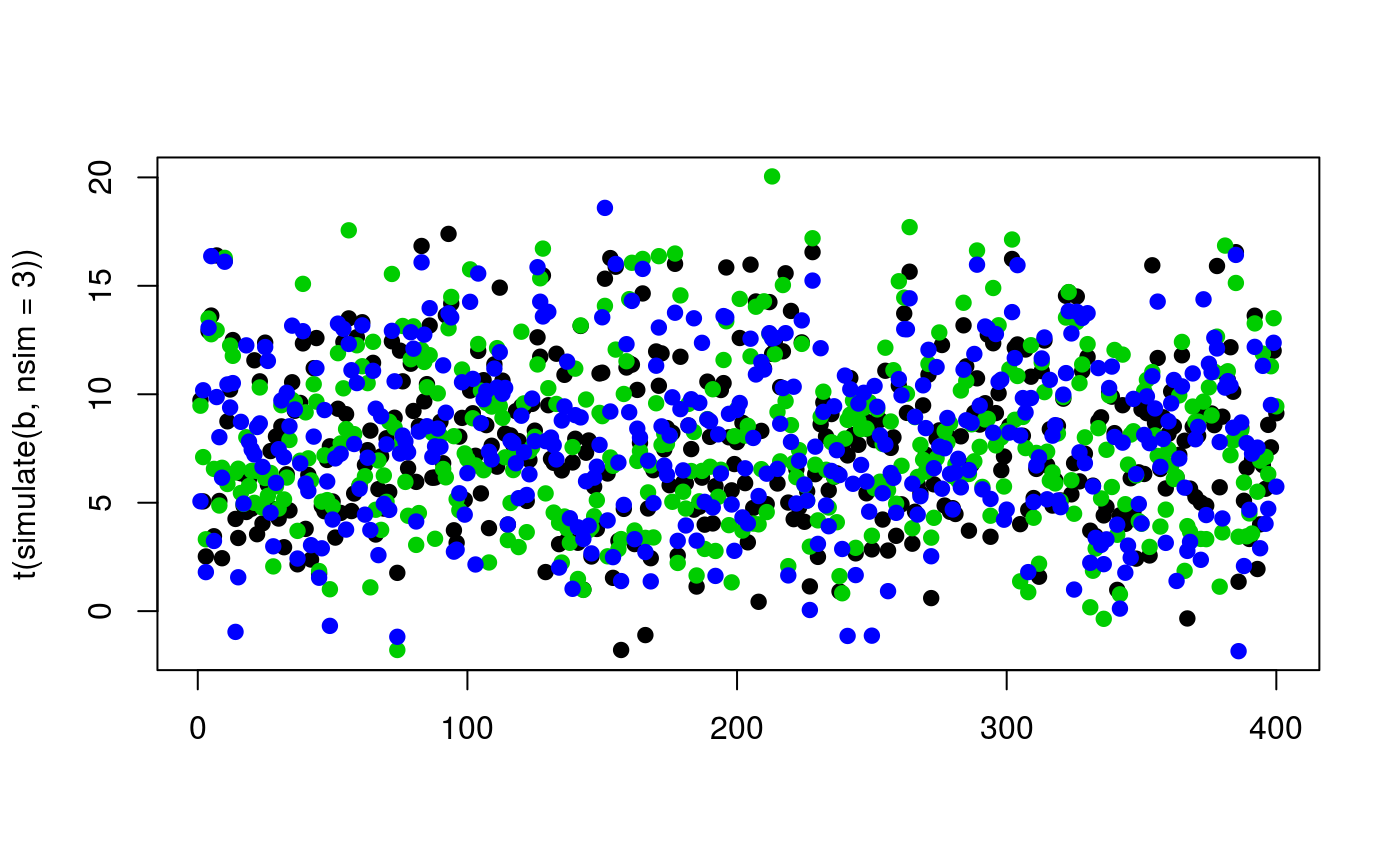This method can be used to simulate vectors of responses from a gamObject.
# S3 method for gam simulate( object, nsim = 1, seed = NULL, method = "auto", newdata, u = NULL, w = NULL, offset = NULL, trans = NULL, ... )
Arguments
| object | the output of a |
|---|---|
| nsim | the number of simulated vectors of responses. A positive integer. |
| seed | currently not used. |
| method | the method used for the simulation. If set to "rd" then |
| newdata | Optional new data frame or list to be passed to predict.gam. |
| u | a matrix where each row is a vector of uniform random variables in (0, 1).
This will be used to simulate responses only if |
| w | vector of prior weights to be used in the simulations. If |
| offset | numeric vector of offsets. For GAMs with multiple linear predictor (see eg gaulss) it
must be a list of vectors. NB: if |
| trans | function used to transform or summarize each vector of simulated responses.
It must take a vector as argument, but it can output a vector or a scalar.
Potentially useful for saving storage (e.g. by transforming each simulated vector
to a scalar). If left to |
| ... | currently not used. |
Value
A matrix where each row is a vector of simulated responses. The number of columns is equal to the number of responses in the fitted object.
Examples
#> Gu & Wahba 4 term additive modelb <- gam(y~s(x0)+s(x1)+s(x2)+s(x3),data=dat) # Simulate three vectors of responses matplot(t(simulate(b, nsim = 3)), pch = 19, col = c(1, 3, 4))
